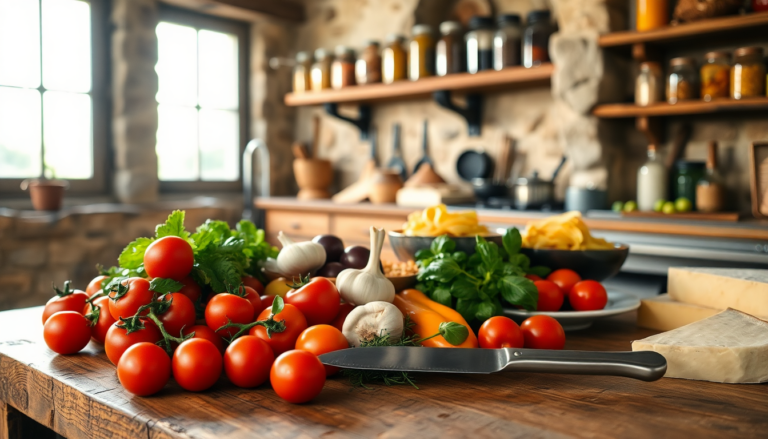Argomenti trattati
In the vibrant world of gastronomy, cooking is so much more than just preparing food; it’s a captivating narrative that unfolds through flavors, textures, and aromas. Each dish acts as a canvas, inviting us to delve into its story—a tale rich in heritage, place, and the beautiful interplay between nature and cuisine. As a former chef turned food writer, I’ve always held the belief that the palate does not lie; it reveals the essence of ingredients and their journeys from farm to table.
Uncovering the Stories Behind the Ingredients
Have you ever thought about the journey your food takes before it reaches your plate? Every ingredient is steeped in history, often grounded in the traditions of the land. Take heirloom tomatoes, for instance. These colorful gems, with their quirky shapes and robust flavors, are a nod to generations of careful cultivation. Farmers have dedicated their efforts to nurturing these varieties, favoring taste over the modern hybrids that often prioritize shelf life. The result? A burst of umami that transports us to sun-drenched gardens and lively local markets, where the essence of terroir shines through with every bite.
When we cook with ingredients that are in season and sourced from local producers, we’re not just supporting sustainable practices—we’re also celebrating the stories that each component carries. The journey of an ingredient, from the soil it springs from to the hands that harvest it, creates a rich tapestry that enhances our culinary experience. By embracing these narratives, we gain a deeper appreciation for our food, turning each meal into a celebration of cultural heritage and biodiversity.
The Art of Technique Made Accessible
As a chef, I’ve learned that the beauty of culinary technique lies in its accessibility. Cooking goes beyond simply following recipes; it’s about grasping the principles behind them. Techniques like fermentation and sous-vide cooking have gained popularity for a reason—they elevate flavors while preserving the integrity of the ingredients. Fermentation, for example, not only enriches dishes but also connects us to ancient practices that have nurtured cultures for centuries.
If you’re feeling a bit intimidated by these techniques, fear not! The key is to start simple. Why not try experimenting with pickling vegetables or whipping up a basic vinaigrette? These small steps can open up a world of flavors. Each moment spent in the kitchen is an opportunity to engage with our ingredients and the stories they tell, transforming a routine meal into a rich and meaningful experience.
Embracing Tradition and Sustainability
The significance of tradition in gastronomy is profound. Cooking methods passed down through generations not only preserve flavors but also help us respect the land and its resources. By embracing these practices, we acknowledge our role in the food system—supporting local farmers and understanding the impact of our choices on the environment.
Consider the classic dish of risotto. Its creamy texture and rich flavors tell a story of patience and careful craftsmanship. The slow stirring of arborio rice, allowing it to absorb the broth gradually, mirrors the rhythms of life and emphasizes the importance of savoring each moment. By honoring such traditions, we foster a connection to our roots and celebrate the diversity of culinary expressions from around the globe.
So, what’s the takeaway? The world of gastronomy is a treasure trove of stories just waiting to be discovered. Each dish invites us on a sensory journey, unveiling the rich tapestry of flavors that define our culinary heritage. The next time you sit down to enjoy a meal, take a moment to appreciate the narratives behind the ingredients and techniques, and let your palate guide you through the stories that shape our world.

